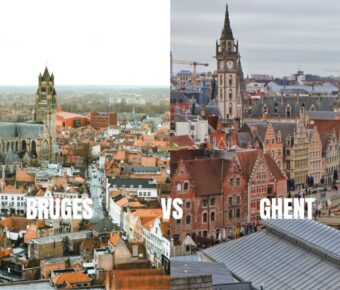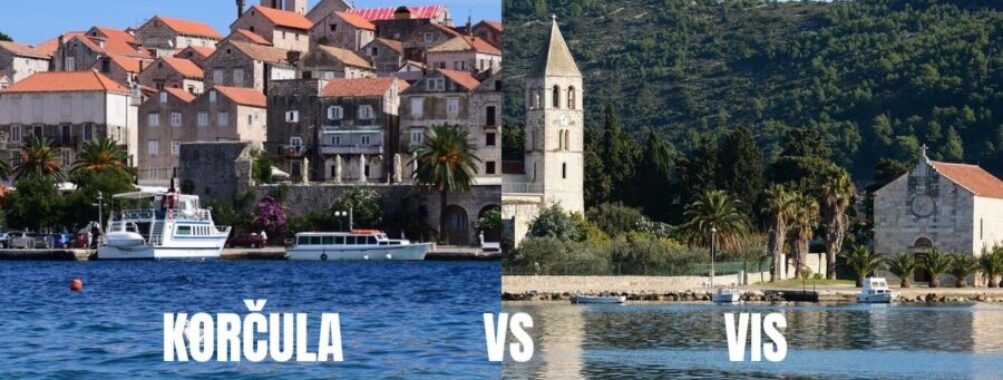
Korčula vs Vis: Which Croatian Island Should You Visit in 2025?
Trying to pick between Korčula and Vis? Yeah, it’s a tough one. Both islands serve up sun, sea, and loads of personality, but in their own ways. If you’re after lively culture, easy connections, and a mash-up of beaches and history, Korčula’s probably your jam. If you crave seclusion, raw scenery, and a slower rhythm, Vis totally wins.
I’ve spent time on both, and honestly, each has its own beat—you just have to figure out which tempo feels right for your trip.
On Korčula, you’ll wander medieval streets, stumble into vineyards, and discover restaurants tucked deep in stone alleys. The place buzzes in summer, but it’s never too hectic to stroll and soak it all in.
Vis? It’s a different world. When I stayed there, days melted away with nothing more than a swim, a hike, and those long, lazy dinners right by the water.
Table of Contents
- Key Takeaways
- Korčula vs Vis: Key Differences
- Island Atmosphere and Vibe
- Size and Accessibility
- Best Time to Visit
- Beaches and Swimming Spots
- Top Beaches on Korčula
- Must-Visit Beaches on Vis
- Water Clarity and Scenery
- Outdoor Adventures and Activities
- Hiking Trails and Nature Walks
- Kayaking and Water Sports
- Cycling and Scooter Exploration
- Cultural Highlights and History
- Historical Towns and Landmarks
- Local Festivals and Events
- Food, Nightlife, and Local Experiences
- Dining and Wine Tasting
- Evening Entertainment Options
- Getting There and Island Hopping Logistics
- Ferry Routes and Transportation
- Traveling from Dubrovnik
- Tips for Planning Your Itinerary
- Frequently Asked Questions
- What unique cultural experiences distinguish Korčula from Vis for travelers seeking authentic local encounters?
- Can you highlight the differences in culinary delights available on Korčula compared to those on Vis?
- How do the historical sites on Korčula contrast with those found on Vis, and which island offers a richer historical journey?
- Could you shed light on the natural landscapes of Korčula versus Vis and which island provides a more picturesque setting for nature lovers?
- What are the differences in the beachscapes between Korčula and Vis, and which island offers a more serene beach experience?
- Can you compare the nightlife and entertainment options available on Korčula with those on Vis for visitors looking to enjoy the local scene?
- Book Your Dream Experience
- More Travel Guides
Key Takeaways
- Korčula brings culture, history, and easy access
- Vis is quieter, wilder, and less touched
- Pick based on whether you want energy or escape
Korčula vs Vis: Key Differences
Both islands dot Croatia’s Adriatic coast, but once you land, they feel like totally different worlds.
One leans hard into history and culture, while the other thrives on quiet beaches and wild landscapes.
So, what kind of trip are you after? Social and lively, or slow and secluded? That’s the real question.
Island Atmosphere and Vibe
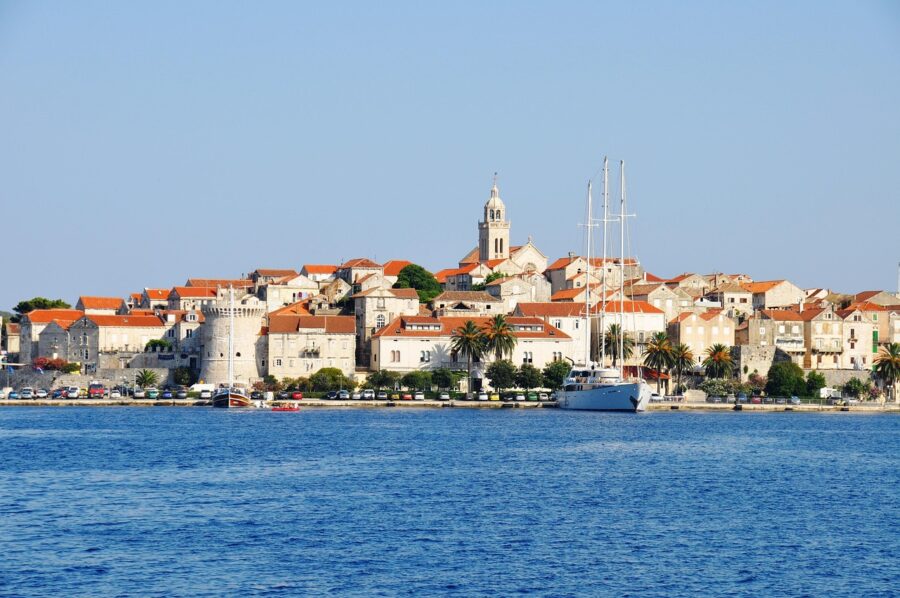
Korčula’s medieval old town honestly feels like Dubrovnik’s little sibling—stone walls, skinny lanes, and restaurants hidden in every nook. In summer, especially in Korčula Town, there’s music, wine bars, and cultural events (don’t miss the sword dance if you can help it). If you want a blend of history and nightlife, this island’s calling your name.
Vis is all about the slow life. For decades, the military kept it closed off, so it feels less developed than the rest. You’ll find fishing villages, quiet coves, and time just seems to drift by.
Craving late nights and a buzzing crowd? Korčula’s got you. If you just want to hear the waves, maybe a seagull or two, Vis is your sanctuary.
Size and Accessibility
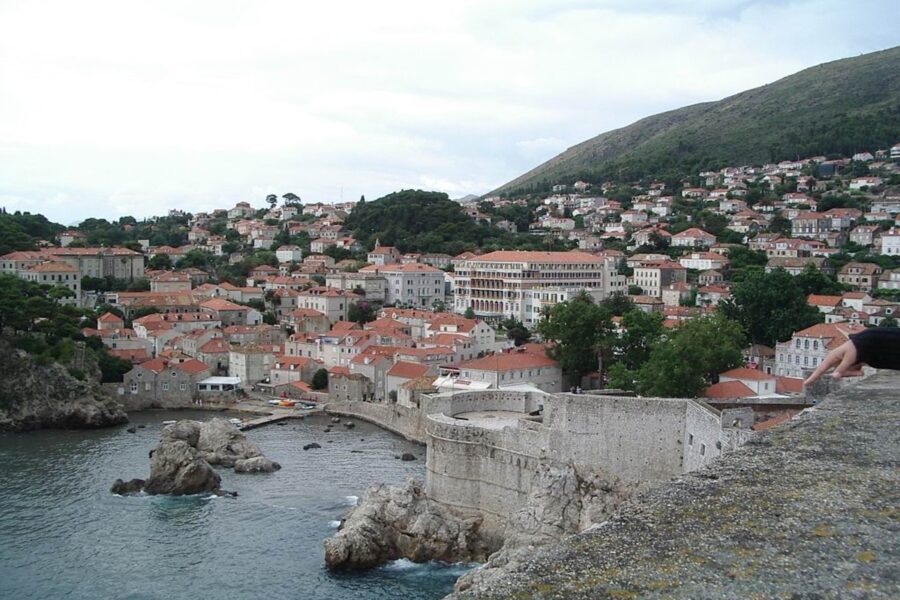
Korčula’s bigger and way easier to reach. Ferries from Split and Dubrovnik run often, and there’s a decent bus system for hopping between towns and beaches. You can get by without a car, but honestly, renting a scooter makes everything more fun.
Vis sits farther out, smaller and more remote. You’ll usually catch a ferry from Split (about 2.5 hours). Getting to Dubrovnik from Vis is a hassle—you’ll probably have to double back through Split, which can eat up most of a day (just check the Rick Steves forum if you don’t believe me).
Short on time or want easy island-hopping? Korčula’s the smoother choice. Vis rewards you with space and quiet, but you have to work for it.
Best Time to Visit
Late spring and early autumn are magic on both islands. The sea’s warm enough for swimming, but the crowds thin out. July and August? Expect higher prices and packed ferries, especially on Korčula.
Vis handles summer a bit differently. Even in August, it feels more chill because it’s farther out and smaller. Sure, beaches like Stiniva or Srebrna get busy, but if you’re up for a walk, you’ll find your own patch of sand.
If you want festivals and nightlife, Korčula in summer is where it’s at. Prefer empty beaches and quiet? Head to Vis in May, June, or September. Either way, you’re getting sunshine and that unreal Adriatic water.
Beaches and Swimming Spots
Both islands serve up fantastic swimming, but the vibe is totally different. Korčula’s beaches are easy to reach and often come with a café nearby. Vis is all about remote coves that feel wild and untouched.
If you’re a sucker for sandy stretches, Korčula’s got more options. But for hidden bays and dramatic scenery, Vis takes the cake.
Top Beaches on Korčula
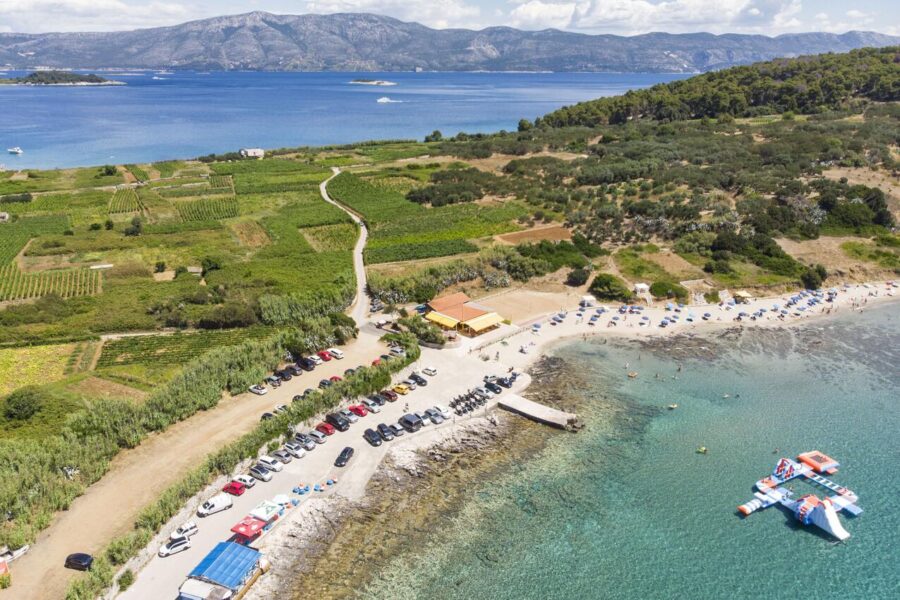
Beaches dot Korčula, but Vela Pržina in Lumbarda is the crowd favorite. It’s sandy (which is rare in Croatia), shallow, and perfect for families. You can rent a sunbed, grab a drink at the beach bar, and honestly, you might not leave all day.
Want something quieter? Rasohatica Beach is pebbly, surrounded by green, and takes a short walk down a dirt road That little trek usually pays off with clear water and fewer people.
Prvi Žal Beach in Lumbarda is another good one—mix of pebbles and sand, and you’re steps from pizza or gelato. I once swam there in the late afternoon and watched locals paddle out on SUP boards.
It felt like a real neighborhood spot, not just a tourist hangout.
Korčula really gives you variety. One day you’re on sand, next day you’re in a rocky bay, and you barely have to drive 20 minutes between them.
Must-Visit Beaches on Vis
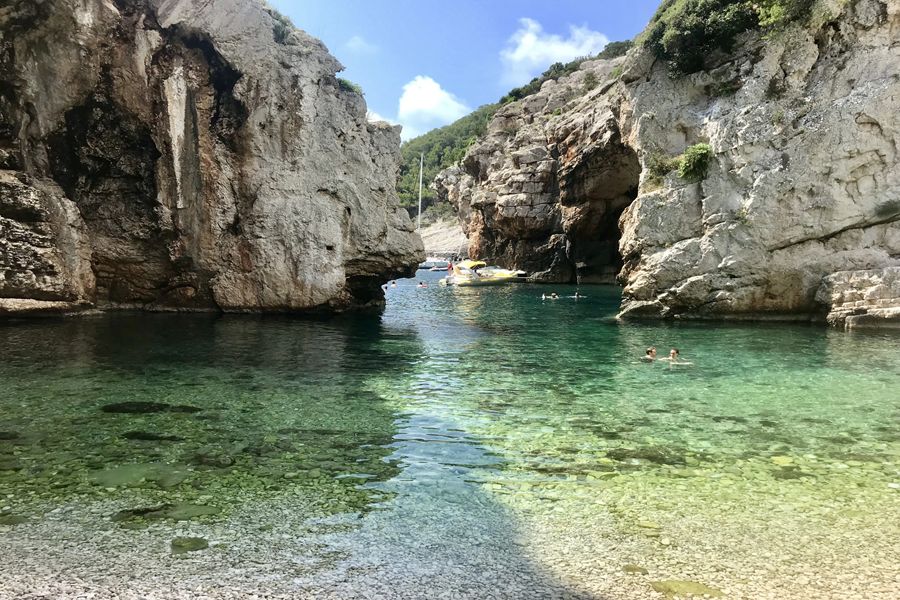
Vis just feels wilder. Stiniva Beach is the most famous—tucked in a cove with high cliffs. You can hike down a steep path or arrive by boat, but either way, it’s like stumbling on a secret. It’s small and pebbly though, so don’t expect a ton of space.
I really loved Srebrna (Silver) Beach—smooth white pebbles that almost glow in the sun. The water’s insanely clear, and pine trees offer natural shade. No bars or shops, so pack snacks and water.
Near Komiža, Kamenice Beach is lively, thanks to its beach bar that keeps the party going into the evening. On the flip side, Lucica Beach is more laid-back, with showers and chairs if you don’t want to rough it.
If you want sand underfoot, walk from Milna Bay to Zaglav Beach—one of Vis’s few sandy spots. It’s about 15 minutes on foot, but so worth it for the calm, shallow water and peaceful vibe. You can check out this guide to Vis beaches for more details.
Water Clarity and Scenery
Both islands have ridiculously clear water, but the backdrop changes the whole experience. On Korčula, you might swim with vineyards or villages in view. The beaches are woven into daily life—you can just walk out your door and into the sea.
Vis is wilder. Coves sit below limestone cliffs, cactus patches, or pine forests. Floating at Stiniva or Srebrna, you really feel like you’re miles from anywhere. That’s the magic—Vis still has that untouched vibe that some busier islands lost long ago.
If you want convenience and a mix of beaches, Korčula wins. For raw beauty and that sense of discovery, Vis is tough to beat. Either way, you’ll get crystal-clear swimming, just with totally different moods.
Outdoor Adventures and Activities
Both Korčula and Vis let you get active while soaking in those island views.
You’ll find rugged trails, calm bays for paddling, and quiet roads perfect for exploring by bike or scooter.
Hiking Trails and Nature Walks
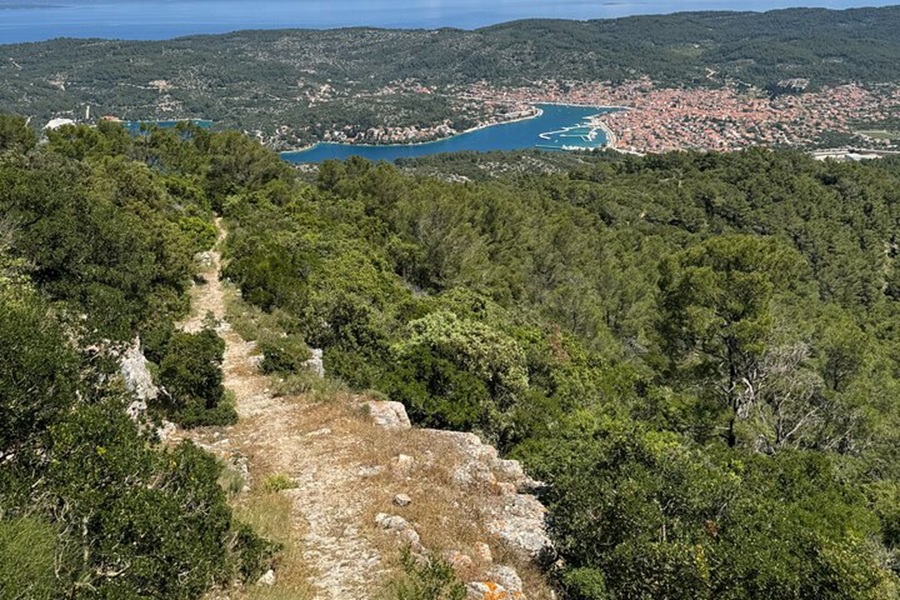
Love hiking? Korčula’s got gentle vineyard paths near Lumbarda and longer inland treks through olive groves. On Vis, the climb up Hum Hill is steeper, but the views over Komiža and the Adriatic are unreal.
Vis feels more wild because it stayed closed to tourists until the ‘90s. A lot of trails aren’t well-marked, so bring good shoes and maybe a GPS app. Korčula’s easier to navigate, with well-trodden routes linking villages.
Both islands reward you with quiet coves at the end of certain walks. If you want a guide, you’ll find local hiking tours on book activities.
Kayaking and Water Sports
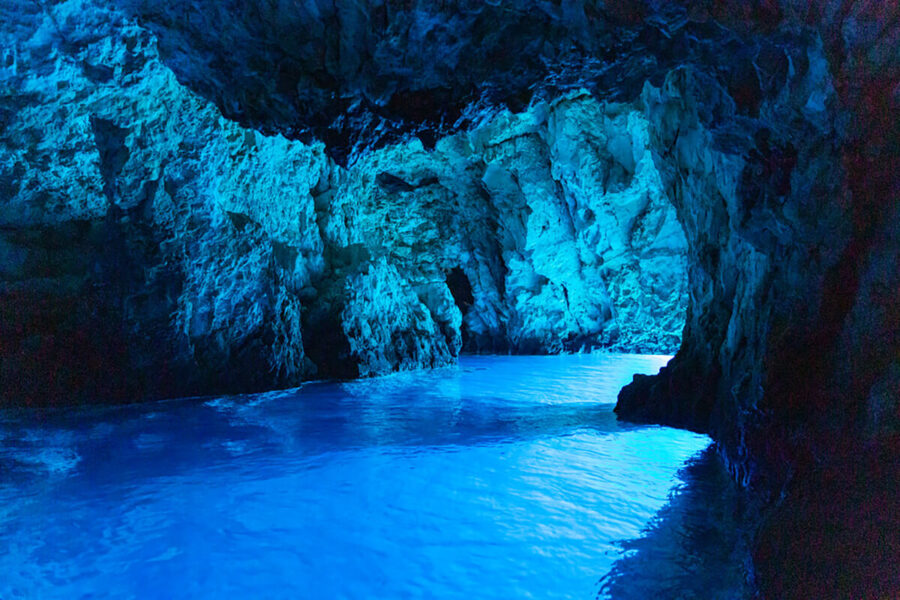
The Adriatic is pretty calm around both islands, which makes kayaking a must-try. On Korčula, you can paddle from the old town to nearby islets like Badija, and you might even spot deer near the shore.
Vis is famous for its sea caves—especially the Blue Cave on Biševo. Kayaking there takes a bit of planning, but when the light hits, it’s absolutely worth it.
If you want speed, both islands offer paddleboarding, snorkeling, and boat rentals. Vis feels quieter on the water—fewer ferries, less noise—while Korčula has more outfitters and easier access to gear. You can also find tours and day trips if you don’t want to deal with logistics.
Cycling and Scooter Exploration
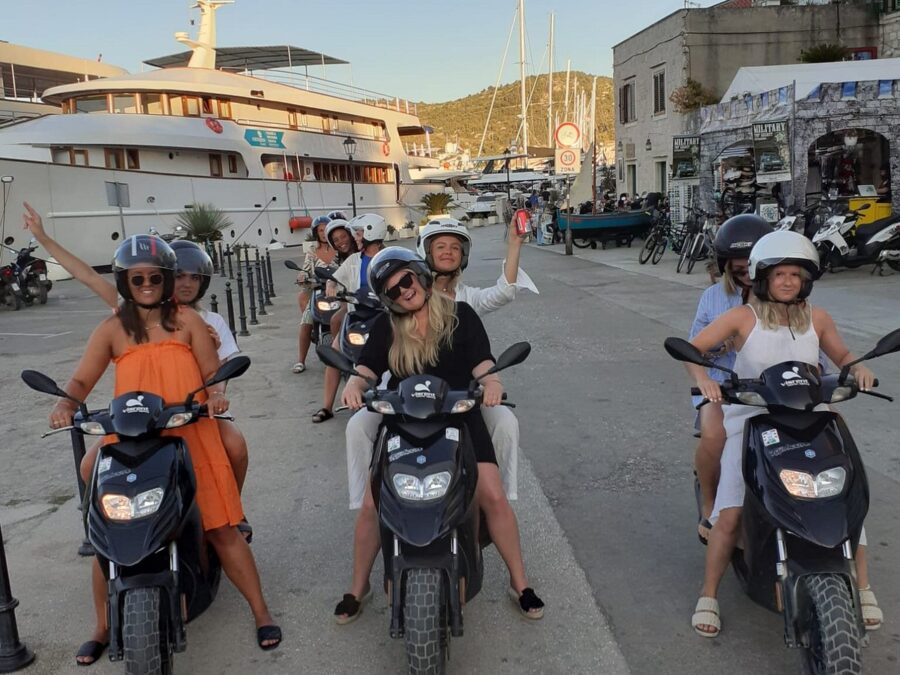
Korčula’s got a network of paved and gravel roads, making cycling a breeze. You’ll pass vineyards (try Grk and Pošip wines), and there are taverns to stop at along the way. The terrain’s rolling, so an e-bike can be a lifesaver if you’re not into hills.
Vis is smaller, so you can loop the island by scooter in a day. The ride from Vis Town to Komiža is short but beautiful, with terraced fields and stone walls all around. Traffic’s light, so you can go at your own pace.
Scooters let you reach hidden beaches like Stiniva without waiting for a taxi. Just remember—gas stations are rare, so fill up before you set out. Both islands reward you with peaceful roads and plenty of swim stops.
Cultural Highlights and History
Korčula and Vis are both packed with history, but they’ve held onto their traditions in really different ways. Korčula leans into its medieval roots and Venetian charm, while Vis keeps things quieter, with echoes of its military past.
Historical Towns and Landmarks

Walking through Korčula Town honestly feels like stepping into a storybook. Narrow stone lanes, Gothic-Renaissance buildings, and old city walls all whisper tales of Venetian rule. Above the Land Gate, you’ll spot the winged lion of Saint Mark—a not-so-subtle nod to that era. If you’re curious, the Korčula Town Museum holds artifacts that go all the way back to Greek and Roman times.
Vis gives off a totally different vibe. It stayed closed to foreign visitors until 1989, thanks to its days as a Yugoslav military base, so a lot of the architecture and landscape feels frozen in time. Both Vis and Komiža towns have small churches, old forts, and Roman bath ruins. I wandered Komiža’s fishing port one evening—quiet, a bit rough around the edges, but so authentic.
If archaeology’s your thing, Korčula has the Vela Spila cave near Vela Luka, where prehistoric finds pop up. On Vis, you’ll spot traces of the ancient Greek colony Issa, considered Croatia’s first urban settlement.
Between the two, Korčula feels more polished, while Vis is raw and a bit mysterious.
Local Festivals and Events
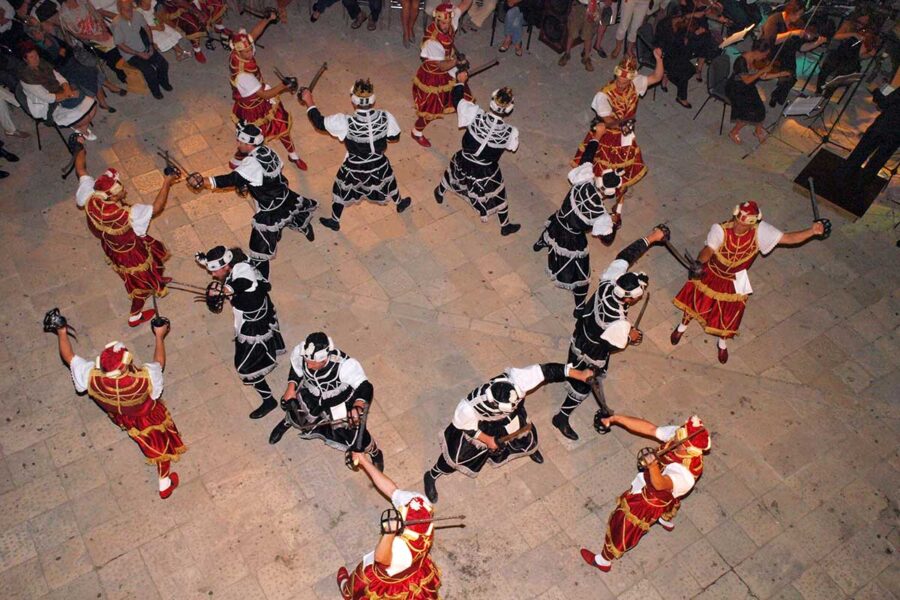
Korčula bursts with energy during its Moreška sword dance, a centuries-old spectacle where locals reenact a dramatic battle between two kings. It’s not just for show—this dance is woven into the island’s soul, and when you catch it live, you’ll feel the pride radiating from the performers.
Summer brings more than sword dances. Music festivals and wine events spill out into the town squares, and you might just wander into a celebration you didn’t expect.
Vis takes a quieter approach. The island skips the grand productions, favoring smaller, heartfelt traditions. Every summer, Komiža lights up with a festival honoring local fishermen—think grilled sardines, klapa singing, and long tables where strangers become friends.
You’ll find yourself swapping stories over wine, maybe even trying to sing along.
Honestly, Korčula’s events feel a tad more polished, almost choreographed, while Vis invites you to blend right in. That contrast? It’s what makes hopping between the two so rewarding. Korčula puts its history front and center, but Vis lets you melt into the moment.
Food, Nightlife, and Local Experiences
Korčula and Vis serve up Dalmatia in their own flavors. One leans into heritage and wine culture, the other keeps things casual with seaside taverns and tucked-away spots. Your evenings will look totally different depending on whether you crave a lively buzz or quiet corners.
Dining and Wine Tasting
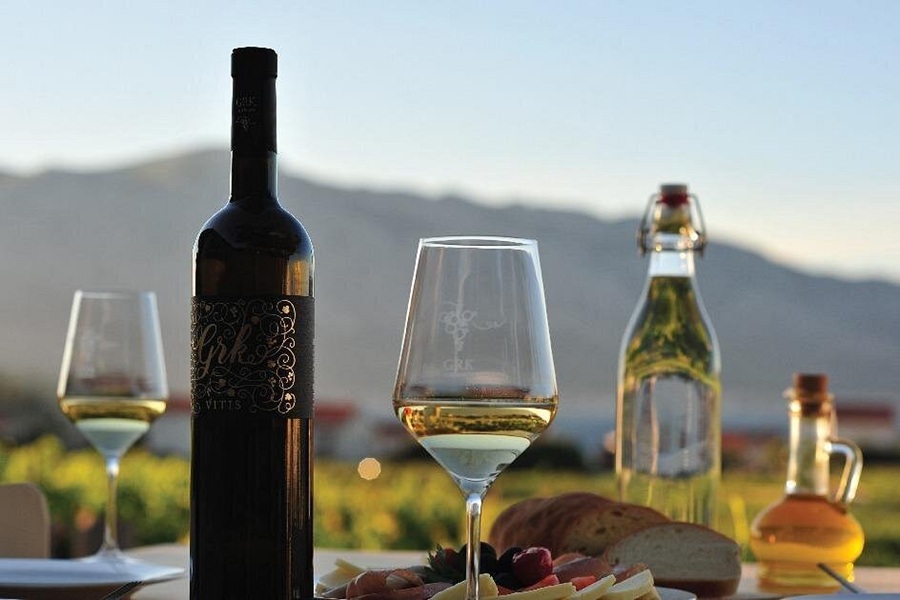
Wine lovers, Korčula’s calling your name. The island’s Pošip and Grk whites are almost impossible to find elsewhere. You can sip them in tiny, family-run vineyards near Lumbarda, usually with a plate of goat cheese and olives. It’s so informal, you’ll feel like you’ve been invited to someone’s backyard picnic.
Restaurants in Korčula Town tend to lean Mediterranean, with a touch of elegance. You’ll spot seafood stews like lešada and grilled fish paired with local wines. Some places, like Konoba Mate, keep it rustic, while LD Restaurant goes for a more refined vibe with knockout sea views.
Vis, though, is all about the real deal. Because of its isolation during the Yugoslav years, food traditions stuck around. You’ll find peka—octopus or lamb slow-cooked under an iron bell—at spots like Konoba Roki’s. And don’t forget a glass of Vugava, the golden local wine that just begs to be paired with grilled sardines.
Evening Entertainment Options
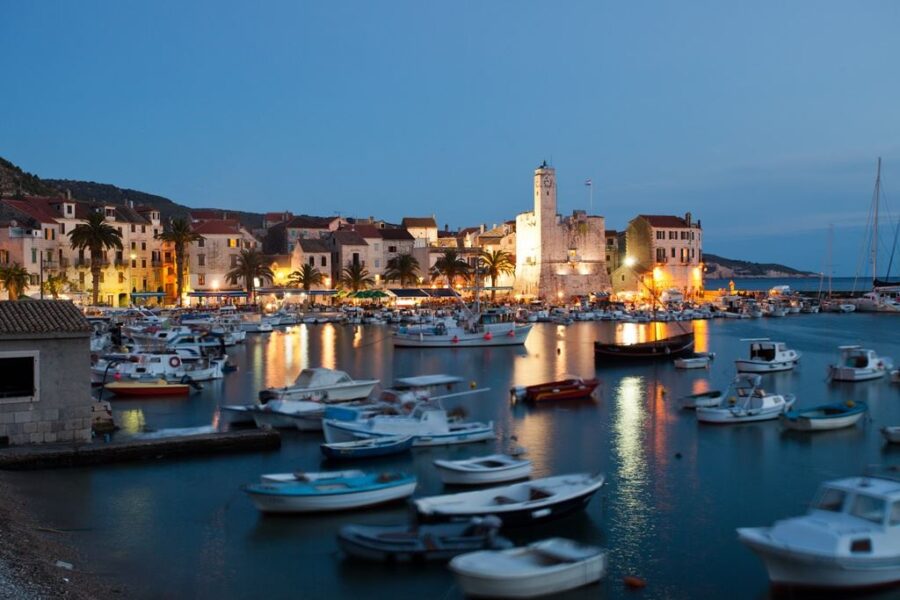
Korčula’s evenings buzz with energy, but never feel overwhelming. In summer, you might stumble into a Moreška performance in the old town, something you won’t see anywhere else. Wine bars and seaside cafés stay open late, with live music floating through the alleys. It’s social, but you never feel hurried.
Vis slows things down. Nights revolve around konobas and a handful of laid-back bars along Komiža or Vis Town’s waterfront. Locals sip rakija, play cards, and chat—dancing? Not really a thing here.
If you’re after a late-night adventure, Korčula’s your spot. But if you’d rather end the day with a glass of wine under the stars, Vis wins, hands down. Walking home on empty streets, hearing nothing but the sea? Pure magic.
For more on food and nightlife, check out guides comparing Korčula and Vis or dive into why Vis is famous for authentic flavors and intimate dining.
Getting There and Island Hopping Logistics
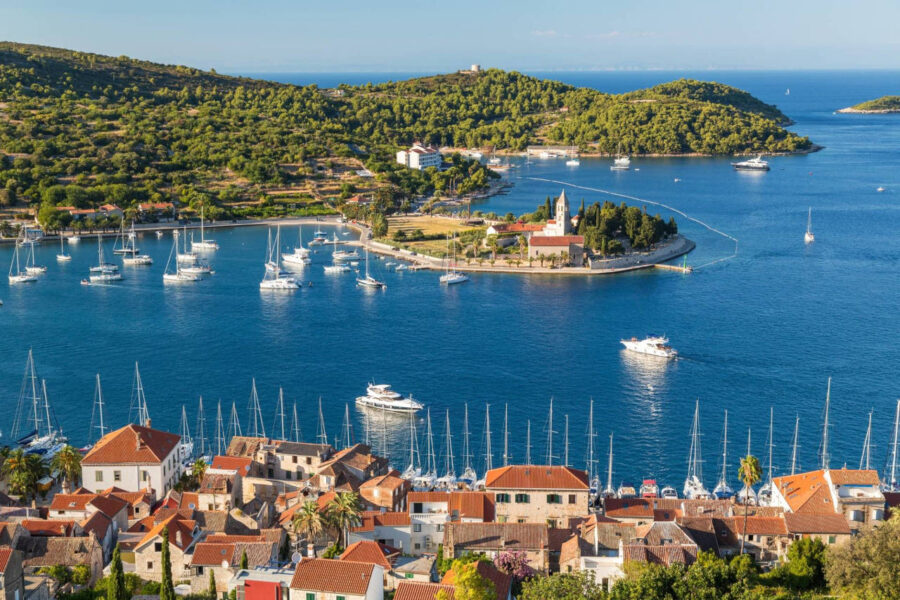
Getting between Korčula, Vis, and the mainland isn’t always straightforward. Most of the time, you’ll route through Split, Hvar, or Dubrovnik, depending on where you’re coming from and what fits your plans.
Ferry Routes and Transportation
There’s no direct ferry between Korčula and Vis. You’ll have to connect through Split or Hvar—yes, it’s a detour, but also a chance to sneak in another island. Passenger catamarans and car ferries run all year, though summer schedules are much friendlier.
From Split, you can grab a car ferry to Vis with Jadrolinija, or hop a catamaran that swings by Hvar. To get to Korčula, ferries from Split stop at towns like Vela Luka or Korčula Town. Not all ferries take cars, so double-check if you’re road-tripping.
Checking timetables ahead of time is a lifesaver, especially in July and August when tickets vanish fast. If you’re flying in, Skyscanner and KAYAK make comparing routes into Split or Dubrovnik a breeze. Those cities are your main ferry gateways.
Traveling from Dubrovnik
Starting in Dubrovnik? You can reach Korčula directly by catamaran in about two hours. These ferries run daily in summer, sometimes stopping at Mljet or other islands. It’s an easy ride and honestly, one of the smoothest ways to get to Korčula.
Getting to Vis from Dubrovnik is trickier. No direct ferry, so you’ll need to go north to Split first, then catch the Vis ferry. Usually, you’ll have to spend a night in Split unless you’re a scheduling wizard. But honestly, Split’s old town is worth a night anyway.
If you like to keep your plans loose, book your first and last nights ahead, then see how you feel in between. Booking.com is great for last-minute rooms if you decide to stay longer somewhere that surprises you.
Tips for Planning Your Itinerary
Island hopping sounds easy, but in Croatia, it’s a bit of a puzzle. Ferries rarely line up perfectly, so build in some buffer days. Don’t try to go from Vis to Korčula in a single morning—you’ll need to route through Split or Hvar.
Think about whether you need a car. On Vis, having wheels helps if you want to explore Komiža, Stiniva Cove, or the inland villages. On Korčula, you can get by with buses or bikes if you’re based near Korčula Town. Renting a car just for certain stretches can save you money and headaches.
I’ve learned to avoid evening travel. Ferries run late, and arriving at a new island in the dark is never fun. If you’re juggling a few islands, sketch out a rough plan first, then grab ferry tickets when schedules drop in spring. Trust me, it cuts down on stress.
Frequently Asked Questions
Travelers always want to know how Korčula and Vis compare when it comes to culture, food, history, landscapes, beaches, and nightlife. Each island brings its own vibe, and those differences can totally shape your trip.
What unique cultural experiences distinguish Korčula from Vis for travelers seeking authentic local encounters?
On Korčula, you might wander into a summer festival and catch the Moreska sword dance—it’s like time-travel. The old town’s medieval lanes also host art pop-ups and live music, so the cultural scene feels lively and layered.
Vis moves at a gentler pace. You’re more likely to share a chat with fishermen by the docks or join a village feast. It’s less of a show, more of an invitation into island life.
Can you highlight the differences in culinary delights available on Korčula compared to those on Vis?
Korčula’s food scene leans hard into wine pairings. Whites like Grk and Pošip are unique here, and you’ll often enjoy them with seafood risotto or lamb cooked under the bell. Vineyards and dining? They go hand in hand.
Vis keeps things honest and simple. The island’s famous for pogača, a savory pie stuffed with anchovies or sardines. And if you want to try something special, grab a glass of Vugava—it’s a lesser-known grape, but perfect with grilled fish fresh from the sea.
How do the historical sites on Korčula contrast with those found on Vis, and which island offers a richer historical journey?
Korčula’s old town feels like a bite-sized Dubrovnik. You’ll wander past St. Mark’s Cathedral, the supposed house of Marco Polo, and Venetian details everywhere. Every narrow lane feels like a page from a history book.
Vis tells a different story. Its past is tangled up in military secrets and isolation. Check out Fort George, old tunnels, and relics from the days when foreigners couldn’t even visit until the late ‘80s. It’s less polished, but honestly, that rawness is fascinating.
Could you shed light on the natural landscapes of Korčula versus Vis and which island provides a more picturesque setting for nature lovers?
Korčula is lush—rolling vineyards, pine forests, and fertile valleys. If you love cycling or long drives, the scenery keeps surprising you.
Vis feels untamed. It’s rockier, with dramatic cliffs and hidden coves. Hike up Mount Hum for sweeping views across the Adriatic, and don’t skip the Blue Cave on Biševo—it’s unforgettable.
What are the differences in the beachscapes between Korčula and Vis, and which island offers a more serene beach experience?
Korčula rocks some sandy beaches like Vela Pržina (a rarity in Croatia), plus pebbly bays like Pupnatska Luka. Beaches are easy to reach and great for families.
Vis is for the seekers of solitude. Stiniva Beach hides between cliffs and takes a little effort to reach, but it’s worth every step. Srebrna Beach has smooth white stones and a laid-back vibe. If you’re after true serenity, Vis is the one to beat.
Can you compare the nightlife and entertainment options available on Korčula with those on Vis for visitors looking to enjoy the local scene?
If you’re after a lively night, Korčula’s probably got what you want. Bars spill out along the old town walls, and in the summertime, you might even catch a music festival or an open-air concert if you’re lucky.
It’s not exactly wild—don’t expect Ibiza—but the vibe feels social and there’s always a gentle buzz in the air.
Vis, on the other hand, definitely winds down after sunset. In Vis Town and Komiža, you’ll stumble into a few cocktail bars, but honestly, most people hang out over long dinners or sip wine right by the water.
If you’re chasing mellow evenings and that slow, dreamy island pace, Vis just nails it.
